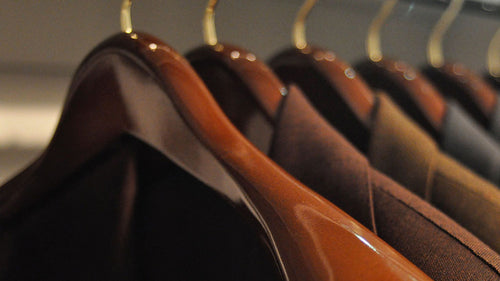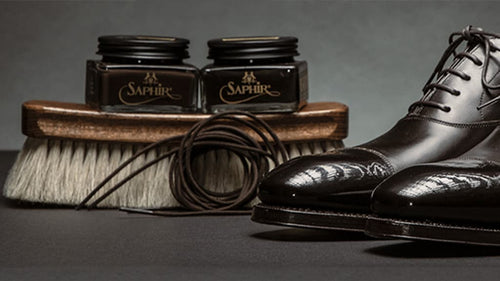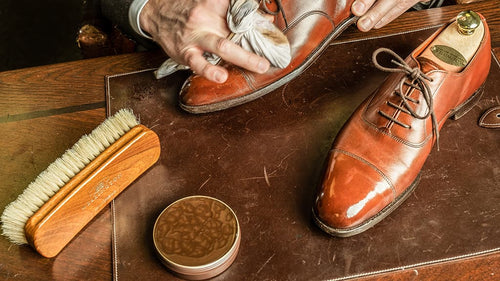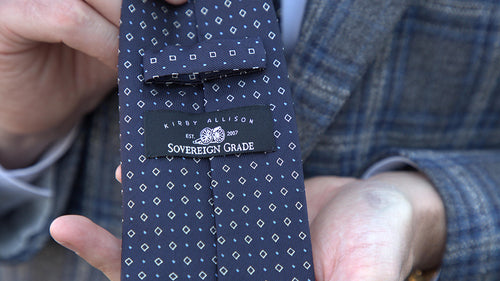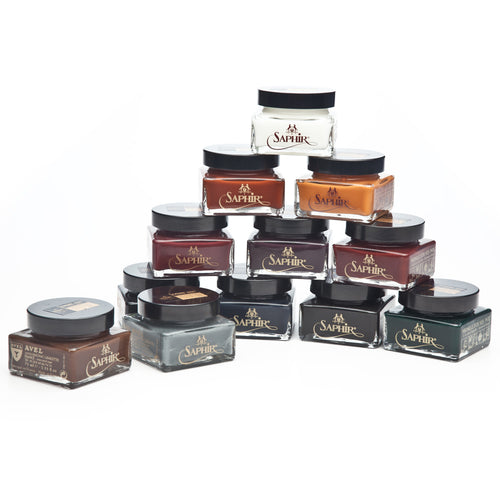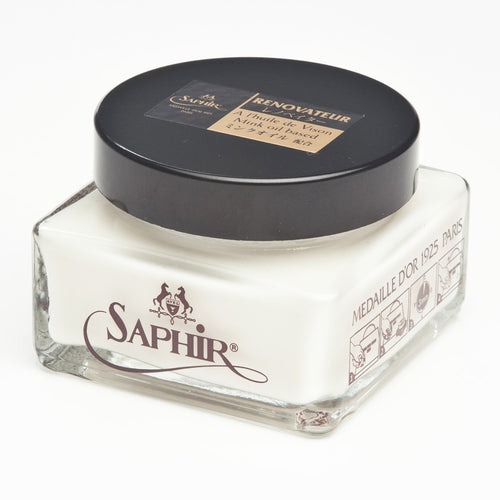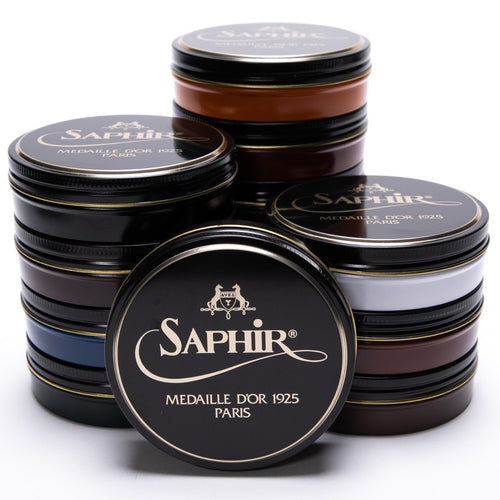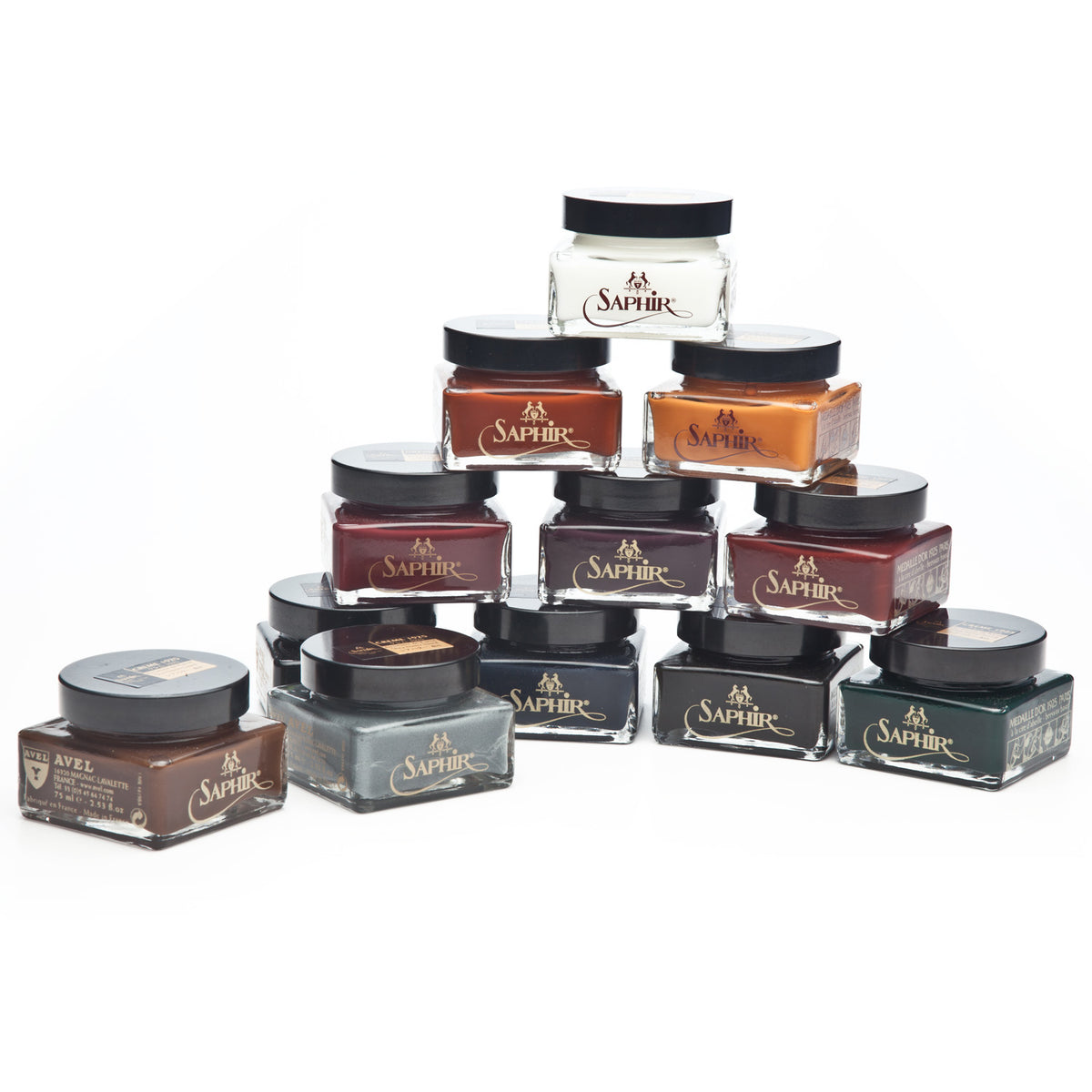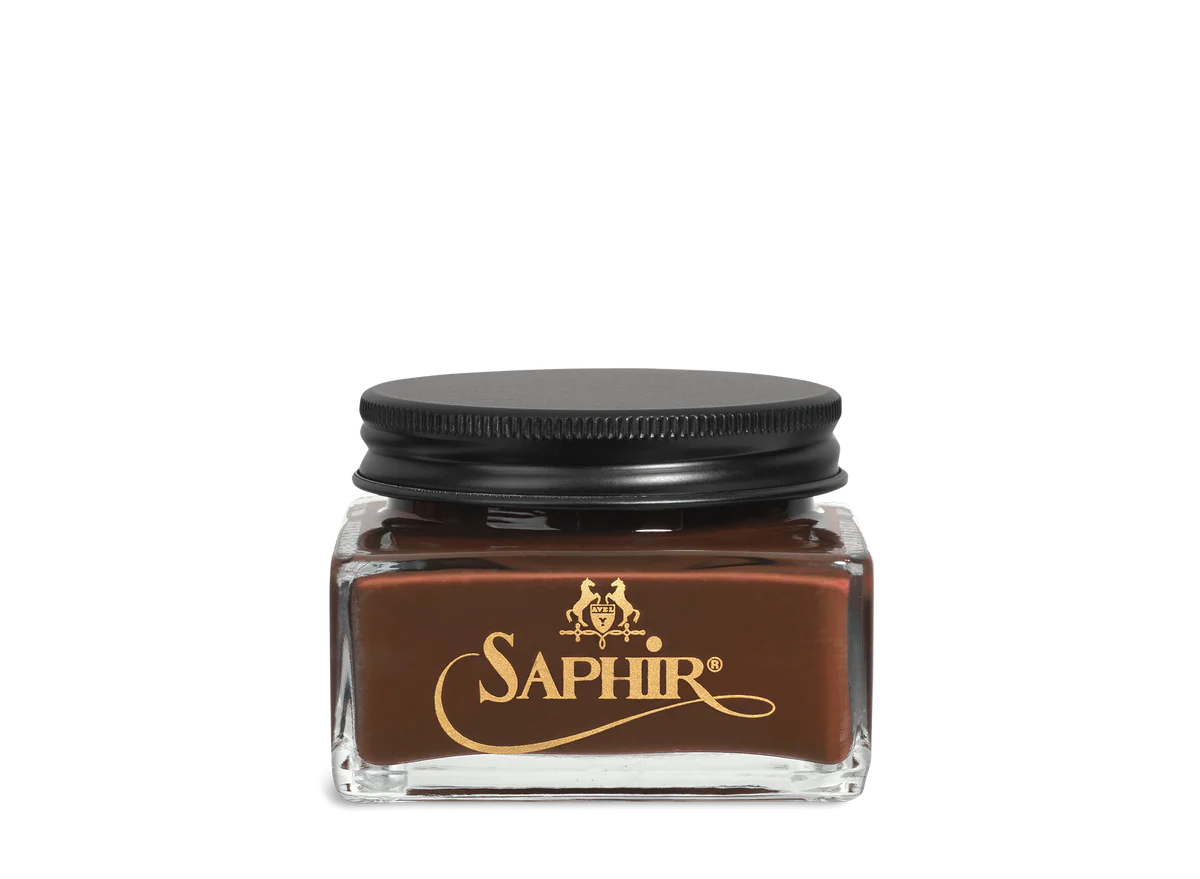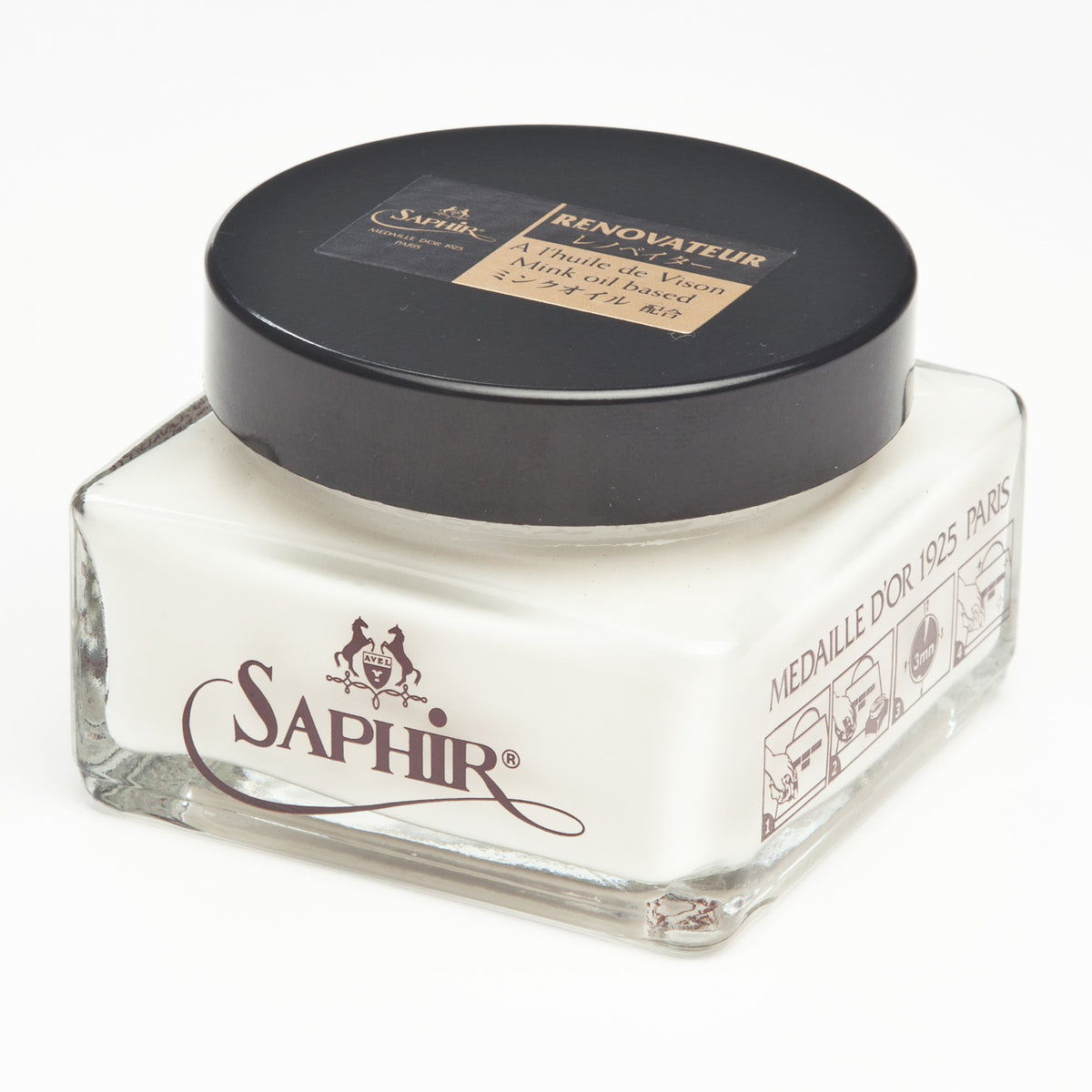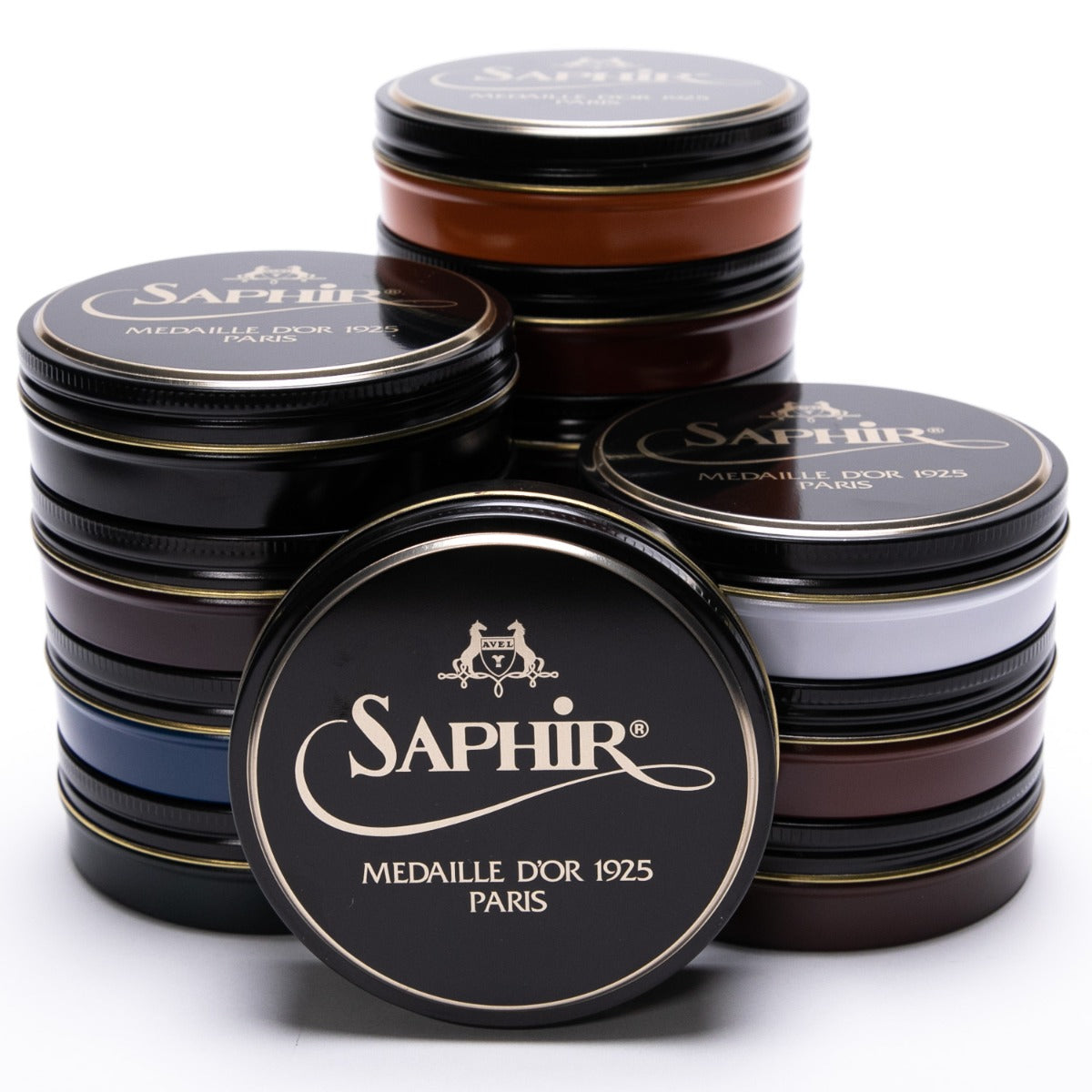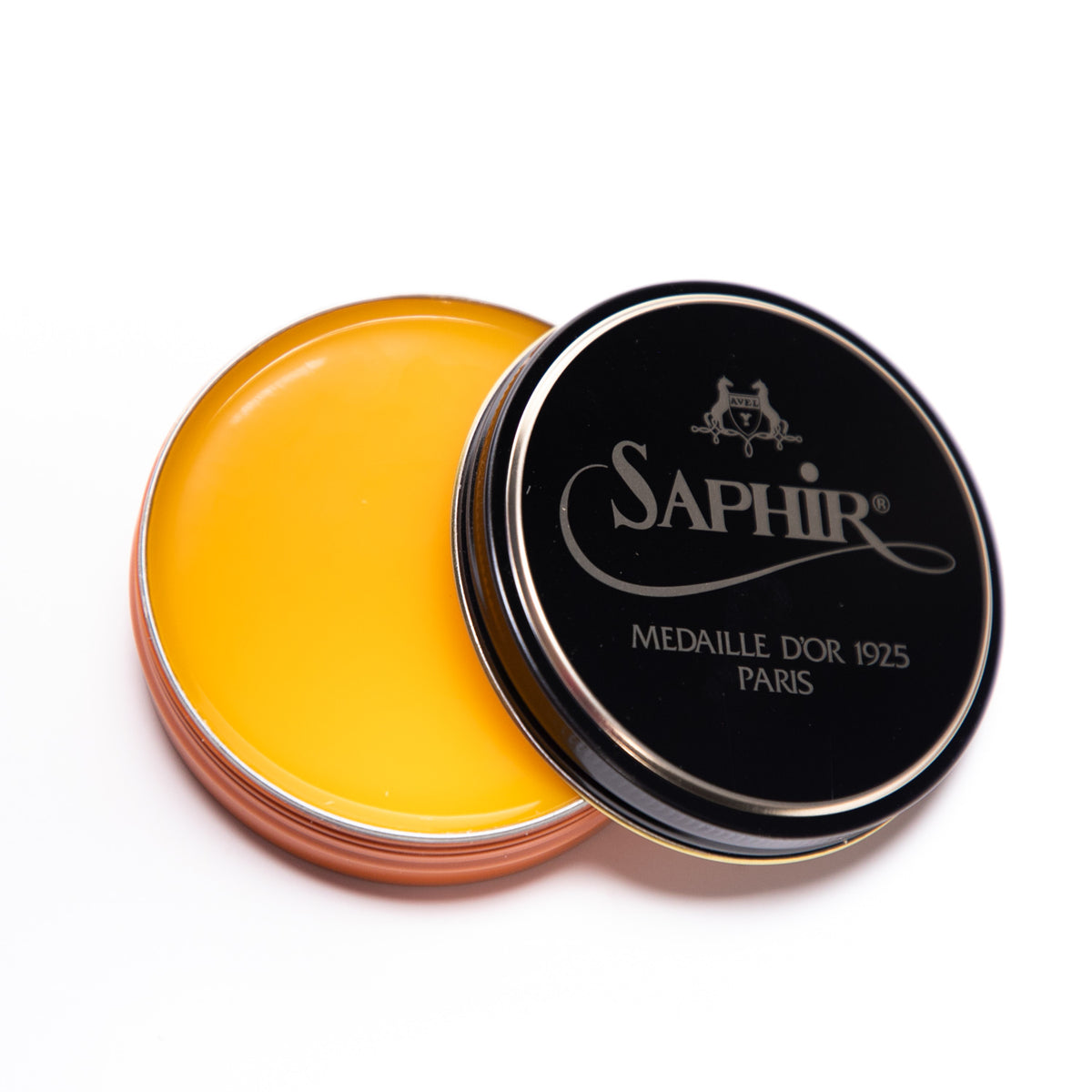Learn how to mend your socks using our new darning egg. The darning egg holds the textile being darned firmly, so that the darner can focus on making even, tight stitches.
Products used in this video:
Transcription
Hi, I'm Kirby Allison, founder of The Hanger Project. Now we've all had a pair of dress socks develop a hole in the toe or the heel and oftentimes it marks the end of the lifetime of a pair of dress socks. However, if you're investing in really high-quality, luxury Italian dress socks, and spending upwards of $45 on a really nice pair of socks, the idea of throwing a pair of socks away the moment that one small hole develops is really quite wasteful. In this video, I'm going to be showing you how to mend and repair your men's dress socks using a needle, thread, and a darning egg.
Now one of the things that's important to understand about a really high-quality pair of dress socks is they are by design knit very finely. That means that the finer the dress sock, the more susceptible it is to developing holes. It's really inevitable, and I think that men should darn their socks in order to increase the lifetime of their really fine dress socks. One of the hallmarks of really high-quality, luxury Italian dress socks is how many needles are used to actually knit the sock. The more needles, the finer the sock. So for instance, this Palatino dress sock, which we carry on The Hanger Project, is knit using the highest number of possible needles: 260. Now the result is a really fine, luxurious dress sock that all but disappears whenever you're wearing it, which is one of the things that makes a great dress sock comfortable.
So you would never go out and buy a really fine pair of handmade English or Italian shoes and then wear a ski sock with that. I mean it would be crazy to do that because you wouldn't experience any of the beauty or the comfort built into that shoe. And a really fine dress sock by design should be thin because it allows you merely to slip your foot into the shoe and still experience as much of that shoe as possible. But one of the problems is that inevitably with much wear you're going to develop small holes in the socks like this one. Now they're very easily darned with a darning egg and a needle and thread just in the matter of a few minutes, and in this video I'm going to show you how to do that.
So to mend your luxury dress socks really you don't need anything more than just a needle and thread. However, having something called a darning egg makes that process a whole lot easier. Now the purpose of a darning egg is you insert it into your sock and it allows you to have a surface to take the needle against as you're sewing or mending the hole. Now we sell this darning egg on The Hanger Project. I think it's available for less than $20 and having a darning egg, needle, and thread handy in your drawer, or your sock drawer, will make it a lot easier for you to mend your socks.
The first step to mending any holes in your dress socks is to find the hole and then insert the darning egg. Now the purpose of the darning egg is to allow you to one, kind of expose where the hole is and then to have a surface to sew against. In this video I'm using a white thread just to make it easier for you to see what I'm doing, but if you're doing this at home you'd probably want to use some matching thread that's tone-on-tone, to just further kind of conceal the fact that you've mended your socks, or you could use a bright red thread, to show off the fact that you mend your socks.
So I'm taking a length of thread, and then I'm going to cut that using a pair of scissors. And then I'm going to lick the thread to help me thread the needle. Now you really don't need to have any experience in sewing and learning how to darn, just a little bit of practice. This video's going to show you all the steps necessary. So run that thread through the needle and then you always want to take it not quite all the way halfway through, but kind of a quarter or a third through just to prevent the thread from coming out of the needle.
OK, so the first thing that we're going to do is hold the needle and thread in your hand. And then at the top of the hole, what we're going to do is we're going to anchor the thread. Now take a small piece of the sock and then you're going to run the thread through, not all the way, we'll cut this tail whenever we're done. And then just take it back through those like that same piece of sock that you picked up. Now what you're doing is you're just looping it back here in order to anchor the thread. And you can see I'm pulling that through, if you can pull it through still, then just take it back through one more time because again the purpose here is to prevent that thread from unraveling. So I've done that twice, and as you can see, that's pretty well anchored.
So the first thing that we're going to do is we're going to do what's called a backstitch around the circumference of the sock. Now we want to stay a little bit away from the edge of the hole without being too far because when we're going to come back and use that kind of perimeter stitch or the circle that we drew to then pull the sock together. So the way that you do this is you just insert the needle. Take it through. Just like that. And then just come back kind of splitting the difference. And then sew it through. It's almost like a running stitch except what we're doing is the backstitch part is what allows this to really kind of anchor and secure the sock and the reason we're doing this is because we want to one, have something to pull against, and then two, we want to prevent the sock from unknitting or unraveling any more than it already has.
So the closer you do this together the more effective it is. But you don't need to go crazy. I'm just splitting the difference. I'm staying close to the edge of the hole without getting too close and I'm just going to follow this around until I've got basically this entire hole encircled. And as you can see as I take my needle in it's hitting the darning egg, and then that's allowing me to do this much easier than if I didn't have that. There's really absolutely no way to mend the sock if you don't have something inserted into the sock itself to sew against. If you don't have a darning egg, you know you can really use anything you can find around the kitchen or the house. I've even used a hard-boiled egg before to just sew against that bind but having a darning egg is, of course, the better of the two.
So I'm just I'm pulling the sock tight, and then I'm just simply sewing around the edge. Now you don't want to get too close because it's just going to cause that knit to just unravel. And I'm just pulling the thread just a little bit. You don't want it too tight because then it's going to cause unnecessary bunching.
So you can see, I've sewn all the way around the sock. Now the next step is going to be to use a cross stitch to pull that together and close that hole. So I'm just going to start at the top and you always sew the same way you read which is from left to right. And I'm just going to catch a piece of the sock. Now as you can see I'm doing this above or outside of that original perimeter that I sewed, and then I'm going to come and pick a little more right here. And then I'm just going to pull that together. Now I'm not doing it super tight just yet. I like to use the cross stitch as kind of my first pass to kind of get this together. So I'm coming back over, right, I'm pulling this together.
Now there's going to be bunching. But that's fine. And then again, especially if it's at the toe, if it was the heel I'd say maybe you'd want to be a little bit more careful. But if it's at the toe it's not going to create any type of discomfort to have a little bit of kind of a raised lip there. So again, just simple cross stitch, I'm inserting the needle from the right, picking up a little bit of a sock, taking it through and it's just creating a nice cross stitch like the same stitch that tailors use, behind a jacket, or actually the same stitch they used to sew on labels.
I'm pulling this in. And so you want to pull that top to just get that hole to close. OK. So I've taken that all the way through. Now, it's not the most beautiful needlework, I'm certainly no Bespoke tailor, but it's enough to close that hole and to make these socks wearable and prevent it from growing. So, I've gone all the way, I stitched all the way around, I did a cross stitch to pull it together and then just a simple slip-stitch to just kind of further reinforce that. Now it's time to close, to tie off the thread and to close this.
So I'm going to just loop through. Right here. And as you can see, I'm creating a loop with the thread. Just take the needle through that. And pull that tight right, and do this two or three times. I'm taking it through the sock, I'm creating a small loop, and then just take the needle back through that. And then one of the things I like to do, again, this is just all cosmetic. But in order to further conceal the kind of the detail of this thread I'll take it through here. And then I'll cut it, kind of right here. And then whenever you pull this back that tail just kind of disappears back into the sock, and then I'm going to cut this original where I started.
So as you can see this is completely mended now. And these socks are okay to wear again. In my experience, I mean I've been mending my socks for as long as I've owned them, and I've never really found any of my mending to be uncomfortable. And honestly I kind of find it is a little bit of a badge of pride. I mean I enjoy nice things. But honestly I don't mind being a little bit thrifty, and I think that mending your luxury dress socks is completely acceptable. Nobody is ever going to see this. And it allows you to get significant more wear out of a pair of nice dress socks than you would otherwise be able to get.
So now that we're finished I want to answer a few questions that we get often here at The Hanger Project. The first one is, "Is there anything that I can do to prevent holes from developing in my socks?" And the answer is absolutely yes. One of the largest causes of holes in socks, especially in the toes, are untrimmed toenails. Now if you have a toenail that isn't trimmed and that's too long, it's going to be basically sawing at your sock and that will cause holes to develop really quickly. Another thing is that oftentimes, if you've been sizing your shoes wearing a thicker sock, then if you go to a really fine dress sock, the shoes are too large. Right, because now you don't have all that space being taken up with a thick cotton sock. And so that can cause holes to develop also at the toe and at the heel.
The only other parting advice I'd like to leave you on sock care is to take a look on our website hangerproject.com, we have an in-depth tutorial on how to launder your socks. Now the lifetime of a pair of socks can really be measured on how often you launder them, just like really any piece of clothing. And so we really do recommend specific care whenever it comes to laundering your socks. And you know it's not really covered in depth in this tutorial, but I'll just give you kind of the quick high-level overview. You know the most important thing is to turn your socks inside out, launder them only with socks, using light detergent on a delicate cycle. And then the most important thing you can do to really extend the lifetime of your socks is to never, ever, ever put them into a dryer. Always hang dry your socks, buy drying rack and hang them out to dry, because if you put a pair of socks in a dryer, that high heat is going to cause the elastic you know to wear out and ultimately lose its rebound. And then it always is going to degrade you know the integrity of the natural fiber used to knit the sock. So at all costs avoid the dryer with fine dress socks. So, that's it for a tutorial.
I'm Kirby Allison, founder of The Hanger Project. If you have any questions about how to mend your socks using a darning egg, feel free to ask them in the comments section below. We always make a point to get back to our viewers. Subscribe to our YouTube channel. We're going to be releasing tons of additional videos on not just shoe care, but garment care. And then if you have any questions feel free to email us at shoeshine@hangerproject.com. Thanks for joining us and I look forward to seeing you again soon.


